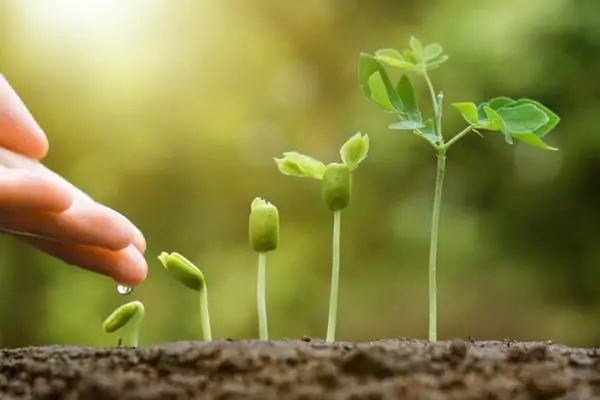In this article, we are going to answer a simple question related to plants that are very common: how exactly do they grow? Although the answer may seem really simple, there are several factors and processes linked to this topic that are worth knowing and understanding.
Therefore, in this article, we want to teach you those little peculiarities about the birth and growth of a plant, or what is commonly known as germination. So, if you want to delve into the subject of how plants are born and how they grow, continue reading this interesting post.
How plants are born
Germination is a natural process which implies that from a seed there is the expansion of a form of life that begins as tiny, which we will call a seedling , and grows until it reaches the size necessary for its survival.
The seed is the reproductive sexual element created after the fertilization phase , in order to perpetuate the species. In addition, the seeds also perform a fundamental function such as expanding through multiplication and dispersal over more areas close to those of the main plant. Therefore, the birth of a plant begins when the seed is placed in a suitable medium for its growth. In the same way, it is important to know that once the germination process begins, or the birth, it is not reversible nor can it be paralyzed without the plant dying.
In the inner part of the seed is the endosperm, which provides the energy necessary for its evolution to begin. The process begins by absorbing water and releasing the hormone gibberellic acid. The resulting substance is absorbed by cells which can thus form enzymes that will change the endosperm, turning it into sugar or glucose. This glucose is the energy base for the plant embryo. As soon as the first leaves appear, the photosynthesis process begins.

The growth of a plant
When the environment where the seed is found has the ideal conditions, the life of the new plant begins. The process begins with the breaking of the seed coat and the appearance of the root . In a simple way we can divide this fact into several stages that are key to understanding the growth process of plants . This is how plants grow:
Pollination
In most cases, fertilization of plants occurs through a process called pollination. This begins from the fall of the pollen of the stamens of the flower itself until it reaches the stigma of the pistil; either from another or from the same flower. Pollinating agents are very varied, from the wind itself or insects to the people themselves.
Fertilization
Process by which the union of the male and female cells of plants is carried out. This begins with the arrival of the pollen grain to the ovary, which happens thanks to pollination. This is usually the most common method in plant reproduction.
Germination and development
At the beginning of this first phase of growth, the seed is still in a latent state of life, after the awakening or completion of this process called germination , the seedling is born . Here, each specific species will need specific conditions of temperature, humidity and light for optimal growth, both of the root and for the production of what we can call the first shoot. Thus, the germination process of plants begins with the development of the embryo, which feeds on the substances stored inside it until it begins to expand, finally breaking the coating provided by the seed. Therefore, we can talk about three key stages:
- Hydration: this stage is essential for the birth of the plant since, thanks to the moisture collected by the seed, it facilitates the breakdown of the protective layer so that the first sprout appears.
- Germination: during this stage is where the metabolic changes that the seedling needs for its correct development take place. Here the hydration received decreases until, in many cases, it is completely reduced.
- Growth: here the radicle, or first root , appears , through which the seedling will begin to absorb water and the rest of the substances necessary to achieve the desired size for its survival.
What do plants need to grow
Plants mainly need light as one of their main sources of energy for their development. Similarly, they need carbon dioxide, mineral salts, and water . Thanks to these energy sources, the different anabolic processes that produce reserve substances are started. In addition, they need other nutrients taken from the soil as a basis for their growth. In this way we can divide the nutrients used by plants into two main groups:
Macronutrients
They are the necessary nutrients to carry out correct morphogenesis and organogenesis. That is, the nutrients that are needed to perform most cellular functions. Within this group is:
- Match.
- Potassium.
- Sulfur.
- Calcium.
- Nitrogen.
- Magnesium.
Micronutrients
Also known minor elements are those used to complete the rest of the enzymatic reactions, key to fulfilling the rest of the metabolic functions of plants. In this group are:
- Boron.
- Copper.
- Manganese.
- Iron.
- Zinc.
Thus, thanks to all these nutrients and environmental factors such as light and humidity, plants continue to develop and grow, continuing their life cycle.
